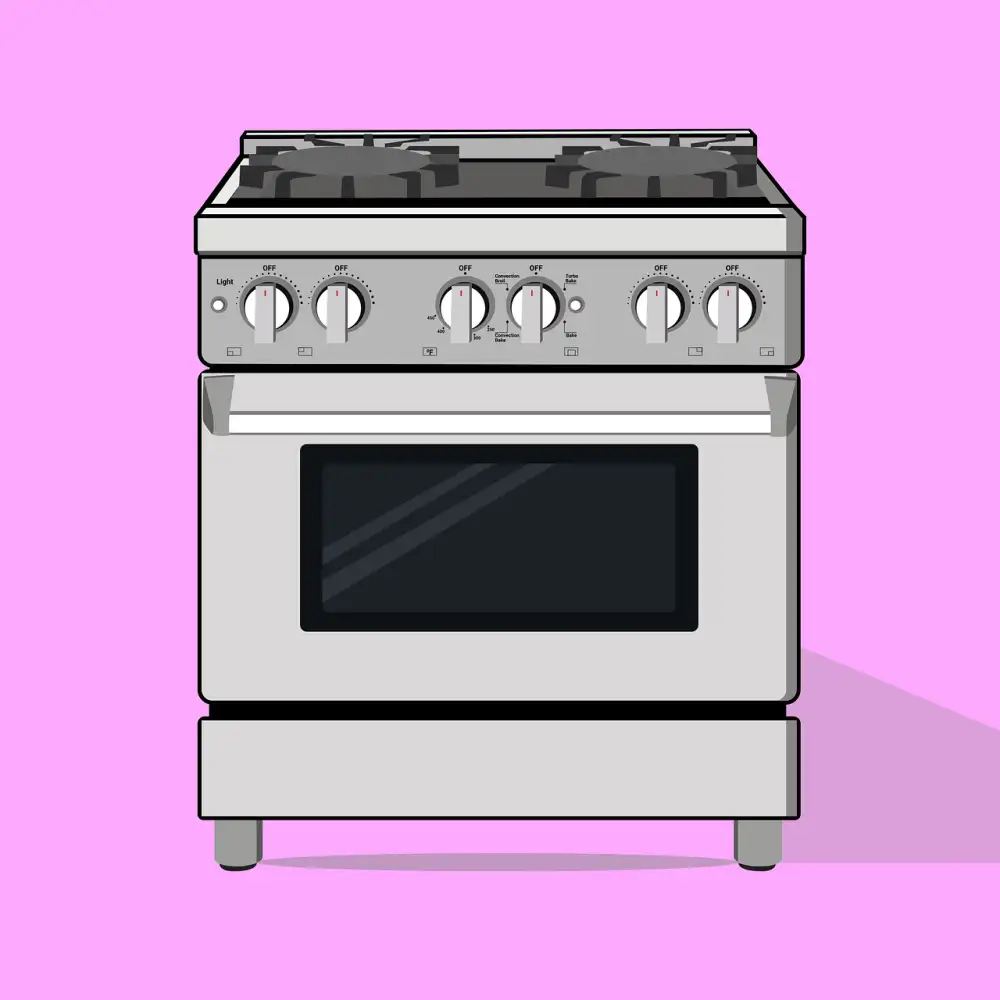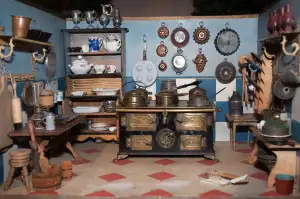Master the Art of Cooking with a Convection Oven: A Step-by-Step Guide for Your Home

- Understanding the Basics of a Convection Oven
- Preheating Your Convection Oven
- Adjusting Cooking Time and Temperature
- Proper Placement of Cookware in a Convection Oven
- Utilizing the Convection Fan for Even Cooking
- Tips for Baking in a Convection Oven
- Roasting and Broiling in a Convection Oven
- Cleaning and Maintenance of Your Convection Oven
Convection ovens have become increasingly popular in home kitchens due to their ability to cook food faster and more evenly. Unlike traditional ovens, which rely on radiant heat, convection ovens use a fan to circulate hot air throughout the oven cavity. This constant airflow ensures that heat is distributed evenly, resulting in perfectly cooked dishes every time. Whether you're a seasoned chef or just starting out in the kitchen, mastering the art of cooking with a convection oven can take your culinary skills to new heights. In this step-by-step guide, we will explore the basics of convection ovens and provide you with valuable tips and techniques to help you become a convection cooking pro. So let's dive in and discover the wonders of cooking with a convection oven!
Understanding the Basics of a Convection Oven
A convection oven is a kitchen appliance that uses a fan to circulate hot air evenly throughout the cooking chamber. This constant movement of hot air ensures faster and more even cooking, resulting in perfectly cooked dishes every time.
The main difference between a convection oven and a conventional oven is the way heat is distributed. In a conventional oven, heat radiates from the bottom or top heating elements, resulting in uneven cooking. However, in a convection oven, the fan helps distribute heat evenly, eliminating hot spots and ensuring that food cooks uniformly.
The fan in a convection oven also speeds up the cooking process by reducing cooking time. Because the hot air is constantly circulating around the food, it transfers heat more efficiently, allowing you to cook your meals faster than with a conventional oven.
Additionally, convection ovens are known for their ability to brown and crisp foods. The circulation of hot air helps create a golden crust on baked goods and gives meats a delicious crispy exterior while keeping them juicy on the inside.
It's important to note that not all recipes are designed for convection ovens. Some recipes may need adjustments in cooking time and temperature to account for the faster cooking process. It's always best to consult your recipe or refer to your oven's manual for specific guidelines when using a convection oven.
Now that you have an understanding of how convection ovens work, let's move on to learning how to preheat your oven properly for optimal results.
A convection oven is a kitchen appliance that uses a fan to circulate hot air evenly throughout the cooking chamber. This constant movement of hot air ensures faster and more even cooking, resulting in perfectly cooked dishes every time.
The main difference between a convection oven and a conventional oven is the way heat is distributed. In a conventional oven, heat radiates from the bottom or top heating elements, resulting in uneven cooking. However, in a convection oven, the fan helps distribute heat evenly, eliminating hot spots and ensuring that food cooks uniformly.
The fan in a convection oven also speeds up the cooking process by reducing cooking time. Because the hot air is constantly circulating around the food, it transfers heat more efficiently, allowing you to cook your meals faster than with a conventional oven.
Additionally, convection ovens are known for their ability to brown and crisp foods. The circulation of hot air helps create a golden crust on baked goods and gives meats a delicious crispy exterior while keeping them juicy on the inside.
It's important to note that not all recipes are designed for convection ovens. Some recipes may need adjustments in cooking time and temperature to account for the faster cooking process. It's always best to consult your recipe or refer to your oven's manual for specific guidelines when using a convection oven.
Now that you have an understanding of how convection ovens work, let's move on to learning how to preheat your oven properly for optimal results.
Preheating Your Convection Oven
Preheating your convection oven is an essential step to ensure optimal cooking results. Unlike traditional ovens, convection ovens rely on the circulation of hot air to cook food evenly and efficiently. To preheat your convection oven, simply set the desired temperature and allow it to heat up for about 10-15 minutes. This will ensure that the oven reaches the desired temperature and that your food cooks evenly from the start. Remember, preheating is crucial for achieving perfect results with your convection oven.
Adjusting Cooking Time and Temperature
One of the key advantages of cooking with a convection oven is its ability to cook food faster and more evenly. However, it's important to note that you may need to adjust both the cooking time and temperature when using a convection oven compared to a conventional oven.
Since convection ovens circulate hot air around the food, it cooks at a faster rate. As a general rule, you can reduce the cooking time by about 25% when using a convection oven. For example, if a recipe calls for baking at 350°F for 30 minutes in a conventional oven, you would only need to bake it at 350°F for approximately 22-23 minutes in a convection oven.
In addition to adjusting the cooking time, you may also need to lower the temperature slightly. This is because the circulating hot air in a convection oven can cause food to cook faster on the outside while still being undercooked on the inside. By reducing the temperature by about 25°F, you can ensure that your food cooks evenly throughout.
It's important to note that these are just general guidelines and may vary depending on your specific convection oven model. It's always recommended to refer to your appliance's manual for precise instructions on adjusting cooking time and temperature.
By mastering the art of adjusting cooking time and temperature in your convection oven, you'll be able to achieve perfectly cooked dishes every time. So don't be afraid to experiment and find what works best for different recipes – soon enough, you'll become an expert in utilizing this powerful kitchen tool!
Proper Placement of Cookware in a Convection Oven
Proper placement of cookware in a convection oven is crucial for achieving optimal cooking results. Unlike traditional ovens, convection ovens rely on the circulation of hot air to cook food evenly. To ensure even cooking, it is important to leave enough space between the cookware and the oven walls. This allows for proper air circulation and prevents hot spots. It is recommended to leave at least 1-2 inches of space around each piece of cookware. Additionally, avoid overcrowding the oven as this can hinder the airflow and result in unevenly cooked dishes. By placing your cookware properly, you can maximize the efficiency of your convection oven and enjoy perfectly cooked meals every time.
Utilizing the Convection Fan for Even Cooking
One of the key features of a convection oven is its powerful fan, which circulates hot air throughout the cooking chamber. This fan helps to distribute heat evenly, resulting in more consistent and uniform cooking.
To take full advantage of this feature, it's important to understand how to properly utilize the convection fan. First and foremost, make sure that the fan is turned on before you start cooking. Most convection ovens have a dedicated setting or button for this purpose.
When using the convection setting, it's recommended to reduce the cooking temperature by about 25 degrees Fahrenheit compared to traditional recipes. This adjustment compensates for the efficient heat circulation and ensures that your food doesn't overcook or burn.
Additionally, keep in mind that cooking times may be slightly shorter when using the convection fan. It's advisable to check your food a few minutes earlier than usual to avoid overcooking. Remember that every oven is different, so it might take some trial and error to find the perfect timing for your favorite dishes.
Another tip for utilizing the convection fan effectively is to avoid overcrowding your cookware. Allow enough space between items on baking sheets or inside pans to ensure proper airflow. This will help prevent uneven cooking and ensure that all sides of your food are cooked evenly.
Lastly, don't forget to rotate your pans halfway through cooking when using the convection setting. This will promote even browning and prevent any hot spots from forming.
By understanding how to utilize the convection fan properly, you can achieve perfectly cooked meals with consistent results every time. Experiment with different recipes and techniques to truly master the art of cooking with a convection oven.
Tips for Baking in a Convection Oven
By following these tips, you can achieve perfectly baked treats every time with your convection oven!
Roasting and Broiling in a Convection Oven
Roasting and broiling are two popular cooking techniques that can be easily mastered with a convection oven. When roasting, the convection fan helps to evenly distribute heat, resulting in a perfectly cooked dish. To roast in a convection oven, preheat it to the desired temperature and place the food on a roasting rack or baking sheet. The circulating hot air will ensure that your meat or vegetables are cooked thoroughly and have a crispy exterior.
Broiling in a convection oven is similar to traditional broiling but with added benefits. The convection fan helps to brown the top of your dish while ensuring that it cooks evenly throughout. To broil in a convection oven, set the temperature to high and adjust the rack position according to your recipe's instructions. Keep a close eye on your food as it can quickly go from golden brown to burnt under the intense heat of the broiler.
Whether you're roasting a succulent chicken or broiling a cheesy casserole, using a convection oven can elevate your dishes to new heights. Experiment with different recipes and cooking times to find what works best for you. With practice, you'll become an expert at roasting and broiling in no time!
Cleaning and Maintenance of Your Convection Oven
Cleaning and maintaining your convection oven is essential to ensure its longevity and optimal performance. Here are some tips to keep your oven in top shape. Start by unplugging the oven and allowing it to cool completely before cleaning. Remove any removable parts, such as racks and trays, and wash them with warm soapy water. Use a non-abrasive sponge or cloth to wipe down the interior of the oven, removing any grease or food residue. For stubborn stains, you can make a paste using baking soda and water and apply it to the stained areas, leaving it for a few minutes before wiping clean. Avoid using harsh chemicals or abrasive cleaners that can damage the oven's surfaces. Don't forget to clean the convection fan blades as well, as they can accumulate dust and debris over time. Lastly, regularly check the oven's seals for any signs of wear or damage and replace them if necessary. By following these simple cleaning and maintenance steps, you can ensure that your convection oven continues to deliver delicious meals for years to come.
In conclusion, mastering the art of cooking with a convection oven can greatly enhance your culinary skills and elevate your dishes to new heights. By understanding the basics of a convection oven, preheating properly, adjusting cooking time and temperature, and utilizing the convection fan for even cooking, you can achieve delicious results every time. Whether you're baking, roasting, or broiling, a convection oven offers superior performance and efficiency. Remember to clean and maintain your oven regularly to ensure its longevity. With practice and experimentation, you'll soon become a convection oven maestro, creating mouthwatering meals that will impress your family and friends. So go ahead, unleash your creativity in the kitchen and let your convection oven be your trusted partner in culinary excellence!
Published: 10. 12. 2023
Category: Home



